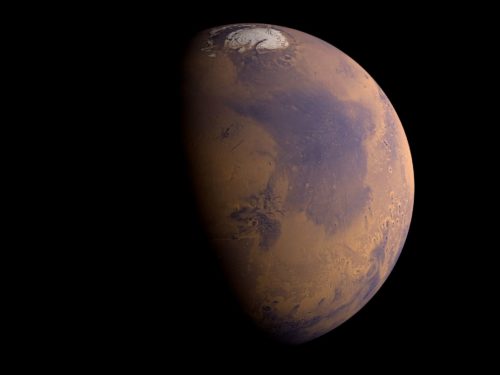
“Prediction is very difficult, especially if it’s about the future.”
— Niels Bohr
The last 10 years can be described as a the “decade of Mars” in space exploration, with a plethora of orbital and rover missions being sent toward the Red Planet on a continuing basis. It is an often repeated statement that any child born from 2004 onward doesn’t know a time when humanity didn’t have a constant presence on the surface of Mars through its robotic emissaries—NASA’s highly successful Mars Exploration rovers Spirit and Opportunity and most recently the Mars Science Laboratory Curiosity rover.
During this time, there has also been a resurgence of the interest toward sending humans to Mars with the specific goal of establishing a viable and self-sustained colony. Inspired in part by the numerous discoveries from NASA’s Mars rover missions which revealed a planet more life-friendly and wet than previously thought, various private space companies and organisations have released very ambitious and impressive plans for turning Mars into humanity’s second home.

Such plans for the establishment of human settlements on the Red Planet are nothing new. Wernher von Braun, the architect of the Saturn V rocket that launched humans to the Moon, was the first to make an engineering study on the feasibility of a manned expedition to Mars, with the publication of his book Das Marsprojekt (The Mars Project) in 1948. Since then, there has been no shortage of proposals for similar mission concepts worldwide from government and private entities alike. The latest (and heavily publicised) additions to the list are the Mars One concept proposed by the Netherlands-based non-profit organisation of the same name, and the Mars Colonial Transporter, or MCT, proposed by U.S.-based Space Exploration Technologies Corporation, or SpaceX.
The more active involvement of the U.S. private space sector in low-Earth orbit activities in recent years, enabled by NASA’s Commercial Orbital Transportation Services and Commercial Crew programs, mostly funded by the space agency, has created a revolution on how spaceflight is conducted. Something that had been the exclusive activity of the U.S. government since the beginning of the Space Age almost 60 years ago can now be conducted by any qualified private company with the suitable technical know-how and financial resources. Furthermore, the success of Scaled Composites’ experimental SpaceShip One to reach suborbital space and win the Ansari X Prize in 2004 has shifted the prospect of suborbital space tourism from the realm of science fiction to that of imminent possibility. Provided that everything goes according to plan, Richard Branson’s company, Virgin Galactic, may become the first commercial spaceliner in history by taking paying customers into suborbital rides out of the Earth’s atmosphere onboard SpaceShip Two (the successor to Scaled’s SpaceShip One experimental prototype) later this year. The general public is slowly awakening to the prospect of having the ability to pay for a ticket for a quick trip to space and experience a few minutes of weightlessness—something experienced only by professional and highly trained astronauts before.
All this activity has created an impression among the general public and the space community alike that unconstrained by the trappings of a slow and bureaucratic government, a free-to-innovate private sector can take on the challenge of deep-space exploration alone, and that the first human expeditions to Mars are just around the corner. If people start saving now, they will be able to buy a ticket and become the first settlers on Mars in about a decade or so.
Nothing could be further from the truth.
This latter assertion today is viewed by many within the private space community to be an outright opposition to progress, fixation on government monopoly, and distaste and total lack of faith for the innovative nature of the private sector. But this view is also largely removed from reality as well. For there is nothing in the history of the space program that could justify the drawing of a line between “government” and “private industry.” The two have been essentially one and the same team from the very beginning. Nearly every spaceship that NASA launched was developed, assembled, and built by a series of private sector contractors. In essence, a public-private partnership was there from the very beginnings of the space program. The argument then that any criticism toward the current efforts of the private space sector is a devalue of its capability doesn’t hold much weight.
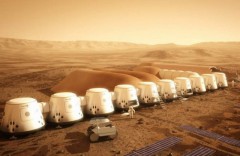
Most of the criticism toward the public space program in the U.S. has been focused on the cost overruns and delays experienced by the vast majority of space projects undertaken by the U.S. space agency. Indeed, there has been hardly any spaceflight project (manned or robotic) undertaken by NASA that hasn’t seen its fair share of schedule slips and cost overruns. This is to be expected in an endeavor like space exploration, which is basically a constant effort to face and overcome major technical unknowns and conquer many engineering frontiers. The research and development that accompanies these activities makes it difficult in many cases to determine how much a project would cost in advance. This has been mainly the reason that NASA has traditionally awarded private contractors with cost-plus contracts, where a project’s risk was carried by NASA itself which had to pay for any cost increases that would result along the way, plus a certain amount of profit for the contractor. Because these types of contracts have left the door open for excessive wasteful spending resulting from bad program management, inefficient oversight, or political meddling, they have been the reason that NASA is unjustly labeled as mostly a “pork-ridden” agency by detractors and industry cynics alike.
Advocates of an entirely privately-run space program, on the other hand, advertise the use of fixed-priced contracts as a way to increase efficiency and performance by minimizing costs. This has certainly been true for NASA’s COTS program, which succeeded in developing new low-Earth orbit transportation capabilities toward the International Space Station, with SpaceX’s Falcon 9 and Orbital Sciences’ Antares rockets. The total cost for the program, which was mostly covered by NASA, amounted to approximately $700 million dollars for both companies.
Yet fixed-priced contracts aren’t always the panacea they seem to be. “In the Defence contracting area, ‘fixed price’ contracts often fail for a variety of reasons,” writes defense analyst Dr Carlo Kopp, for Air Power Australia. “A common scenario is when the contractor or contractor team, understates the risks inherent in the project, and then fails to meet capability, deadline or cost targets. More than often this is a result of the contractor(s) themselves not performing the necessary analytical ‘due diligence’ when bidding on the contract, and thus not understanding what might go wrong in the project and how much it will cost to fix.”
Kopp’s comments are certainly relevant to the field of deep-space exploration and Mars colonisation in particular. These are endeavors which, for the most part, lie outside of the area of the engineering “knowns” to that of the “unknowns.” The simple fact that more than half of the robotic missions that have been launched toward Mars since the beginning of the Space Age were catastrophic failures attests to the level of difficulty of reaching the Red Planet. Mounting a human mission there introduces many challenges that are orders of magnitude more difficult than launching a mere robotic orbiter or lander.

Mars One has already had the first taste of the difficulties described by Kopp, which are inherent in every space project, by facing its first schedule delays. Bas Lansdorp, the project’s co-founder, announced during a press conference in December 2013 that the project’s whole schedule will slip two years, with the first precursor robotic mission now scheduled for 2018 and the arrival of the first crew on Mars scheduled for 2025. When the organisation was founded in 2011, it released its plans which called for sending the first manned mission to the Red Planet in 2023. Launched on top a Falcon Heavy rocket, which is currently under development by SpaceX, this first four-person crew would be followed, according to the non-profit organisation, by new crewed missions every two years afterward, thus creating the first settlement of colonists on the Red Planet.
The total cost of the first manned mission was calculated by Lansdrop to be approximately $6 billion. The co-founder of Mars One expects that by turning the mission into a reality TV show, these costs will be covered in the most part by TV broadcast rights and ad revenue. “The revenue garnered by the London Olympics was almost enough to finance a mission to Mars,” says Lansdorp. “We believe that if we can make this happen, it will be much bigger than the Olympic games.” Although the whole mission concept has received a fair amount of criticism in and out of the space community, Mars One is very confident of its success. “Mars One has developed a realistic plan to establish a permanent settlement on Mars. This plan is built upon existing technologies available from proven suppliers. Mars One is not an aerospace company and will not manufacture mission hardware. All equipment will be developed by third-party suppliers and integrated in established facilities,” states the organisation’s website.
Aside from the fact that no person has ever traveled beyond the orbit of the Moon, and radiation exposure and prolonged crew isolation issues notwithstanding, one of the most difficult challenges of a human mission to Mars would be to simply safely land there. “It turns out that most people aren’t aware of this problem and very few have worried about the details of how you get something very heavy safely to the surface of Mars,” commented Rob Manning, Chief Engineer at the Jet Propulsion Laboratory’s Mars Exploration Directorate, during an interview for Universe Today.
NASA has been the pioneer of sending a series of robotic spacecraft to Mars and safely landing them there. Yet the methods used for landing these robotic spacecraft won’t work for large crew habitats. Even the spectacular and awe-inspiring recent landing of the one-ton Curiosity rover in August 2012, employing the newly developed Sky Crane system, could only carry as much. There have been many solutions proposed through the years that could theoretically enable a spacecraft carrying a human crew to decelerate enough for it to land safely, using a combination of different landing methods from big parachutes to retro rockets. Yet, no payload heavier than one ton has ever been sent on Mars to test and validate these methods. It is almost certain that, given the right amount of time and effort, the solution to the problem of one of the most critical parts of a human mission to Mars will ultimately be found, but for the foreseeable future it remains unknown. “Unfortunately, that’s where we are. Until we come up with a whole new trick, a whole new system, landing humans on Mars will be an ugly and scary proposition,” comments Manning.
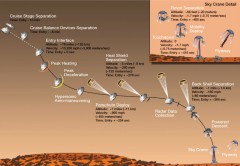
It’s currently uncertain how the founders of Mars One plan to address this problem. According to the organisation’s website, “Mars One will secure the landing capsule from one of the experienced suppliers in the world, for example Lockheed Martin or SpaceX. The SpaceX capsule under consideration is a variant of the Dragon Capsule, tested on several occasions since 2010. Similar Landers will be equipped to perform different functions.” These claims are somewhat misleading and inaccurate. Although both private companies mentioned by Mars One are currently developing spacecraft to carry people to deep-space destinations such as the Moon and Mars, they are nowhere near on demonstrating any capability for landing large payloads on the Martian surface. Lockheed Martin is currently building NASA’s Orion Multi-Purpose Crew Vehicle (or MPCV), which is the agency’s next generation human-rated spacecraft. It was also responsible for the development of NASA’s highly successful Phoenix Mars Lander spacecraft, which touched down near the Martian north pole in 2008. SpaceX, on the other hand, is developing the Dragon capsule, an unmanned variant of which has already made several successful trips to the International Space Station in low-Earth orbit. Considering the unknowns regarding the landing of large and massive payloads on Mars, and the current state of development of deep-space crew habitats and landers, it is very difficult to imagine how Mars One could start sending colonists to the Red Planet by 2025, even if the private organisation were to secure the necessary funding, something which is far from certain as well. It appears more likely that Mars One’s launch schedule will further slip again beyond 2025, introducing the risk of having TV executives and private sponsors lose interest on the project.
Aside from taking part in NASA’s COTS and Commercial Crew programs, SpaceX has its own plans for the colonisation of the Red Planet, with the use of its proposed Mars Colonial Transporter. Elon Musk, the company’s CEO, hasn’t given many specific details for the project since its announcement in 2011, but he has made quite clear in various interviews and public speeches that the MCT will be a fully reusable system. “We are trying to achieve full and rapid reusability,” Musk stated during an interview in Nature. “If we can make fully and rapidly reusable rockets that are cheaper to build than expendable rockets are today, then we will only be worried about the fuel, and the propellant cost per flight is only 0.3% of the cost of the mission.Unless someone invents such a rocket, humanity will be confined to Earth forever.” The ultimate goal for Musk is the colonisation of Mars. “The future of humanity is going to bifurcate in two directions,” he said during the 2013 D11: All Things Digital annual tech conference. “Either it’s going to become multi-planetary, or it’s going to remain confined to one planet and eventually there’s going to be an extinction event. We want to have a future where we’re out there exploring the stars.”
One has to really admire and applaud Musk for his audacity and boldness of vision. Creating a space-faring civilisation is one of the noblest endeavors of the human species. Yet, as the history of spaceflight has shown, the road toward achieving this goal is a very long and hard one, and success is far from certain. “Optimism is always the fuel of choice in this industry … otherwise there would be no industry,” said Henry Vanderbilt, founder of the Space Access Society while commenting on the prospect of commercial space tourism, during an interview for SPACE.com.”Rule number one of projects is, it will take longer and cost more than you planned … doubly so for advanced aerospace vehicle projects.”
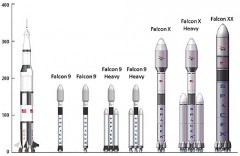
Recently, Musk unveiled some more details for the MCT on CBS News. “We need to develop a much larger vehicle which would be sort of what I call, a large colonial transport system. This would really be — we’re talking about rockets on a scale, a bigger scale than has ever been done before, that make the Apollo Moon rocket look small. And they would have to launch very frequently as well. That’s what’s needed in order to send millions of people and millions of tons of cargo to Mars, which is the minimum level to have a self-sustaining civilization on Mars. And I think we might be able to complete that in about ten or twelve years, so hopefully the first people we would send to Mars would be around the middle of the next decade.”
If Mars One’s plans seem unrealistic, Musk’s goal and timetable for such a heavy-lift vehicle also seems problematic at best. As is constantly stated by SpaceX, a key prerequisite for the MCT concept is for the company to achieve full and rapid reusability for its currently expendable rocket launch vehicles. To that end, SpaceX has been developing the “Grasshopper,” an experimental technology demonstrator launch vehicle, consisting of a Falcon 9 first stage utilising a single Merlin 1D engine. This first-generation Grasshopper vehicle conducted eight highly successful test flights from the company’s launch facilities at McGregor, Texas, before being decommissioned. The test program met all of its objectives with the vehicle successfully demonstrating a Vertical Take Off Vertical Landing (VTVL) capability, while reaching altitudes as high as 2,441 ft (744 m) above the ground, prior to returning to its launch pad. Following the retirement of the vehicle, SpaceX announced plans to conduct high-altitude suborbital test with a second-generation vehicle from Spaceport America in New Mexico. This is seen as the next step in creation of fully reusable rocket launch systems.
SpaceX’s Grasshopper could be seen as a continuation of a similar initiative that was undertaken by NASA and McDonnell Douglas during the 1990s, under the Delta Clipper DC-X/XA test program. During its test flights, the Delta Clipper experimental vehicle demonstrated similar VTVL capability, while reaching altitude as high as 10,301 ft (3,140 m) above the ground. Yet going from launching an experimental VTVL prototype a few thousand feet off the ground to massively transferring crew and cargo to Mars onboard a fully reusable gigantic heavy-lift vehicle within the next 10 years is quite a stretch. Musk is quite ready to acknowledge that fact: “I’d like to emphasize this is an aspiration for SpaceX—I’m not saying that we will do it. But I believe it can be done.”
Many point to the fact that the U.S. space program faced a similar challenge in 1961 of putting a man on the Moon, and it succeeded spectacularly in doing so. Yet what these people fail to realise is that this was primarily achieved because of a never-before seen vast mobilisation by the government and the whole of the U.S. space industry, aided by vast amounts of funding and resources. A very important reason that the first Moon landing occurred in 1969, a few months before the end of the given deadline, was that the engineers of the Apollo program didn’t plan for the Saturn V/Apollo systems to be reusable or more affordable. They just opted for the quickest way to meet President Kennedy’s challenge, which came in the form of expendable heavy-lift rockets and crew capsules. Had reusability and affordability been the main goal, it is uncertain when exactly the U.S. would have landed on the Moon.
When the space agency sold the concept of the Space Transportation System to President Nixon in the early 1970s (of which the space shuttle was just a part of), it envisioned the creation of a highly reusable and cheap orbital vehicle, capable of routine, safe, and low-cost access to orbit. The space shuttle was thought at the time to be as rapidly reusable and affordable as an airliner. The L5 Society that was founded in 1975, inspired by American physicist Gerard K. O’Neill’s visions of large human colonies in space, capable of housing hundreds of thousands of people by the turn of the 21st century, saw the proposed space shuttle as a means to enabling this vision. History has shown, that although the space shuttle was a truly remarkable flying machine that achieved many spectacular things, it really fell short of NASA’s original aspirations. The concepts for large habitats placed in orbit around the Earth-Moon Lagrangian points remained in the realm of theoretical possibility.
Past history, of course, is not always indicative of the way things will turn out in the future. SpaceX may well turn out to be successful on creating a fully reusable launch vehicle, but whether this will turn out to be as rapidly reusable or as financially affordable as proclaimed remains to be seen.
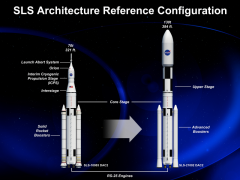
Another problematic aspect of Musk’s proposition is the creation of a fully reusable heavy-lift launch vehicle “on a bigger scale than has ever been done before.” If rapid and full reusability of a rocket launch vehicle is currently considered such a big challenge, then the creation within the decade of a vehicle on a scale that would dwarf even the Saturn V rocket moves into the sphere of the “unattainable”—at least for the timescales proposed. The desirability for such a heavy-lift vehicle is also in question. “While on paper a booster can be designed to any size desired, reality is different. Some super boosters have been designed with 1,000 tonnes-to-LEO capability. Sounds great, but they would probably blow away Orlando when they took off (or at least the Kennedy Space Center),” writes renowned aerospace engineer and president of the Mars Society, Dr. Robert Zubrin, in his book The Case for Mars. Zubrin sees a heavy-lift rocket capable of launching approximately 140 metric tonnes to LEO as the vehicle of choice for implementing his Mars Direct plan of transporting humans to the surface of the Red Planet and establishing a viable settlement there.
Incidentally, this will be the payload-to-LEO capability of the evolved Block II version of NASA’s Space Launch System (or SLS), which is currently under construction and on schedule for its first test flight in 2017. Although the space agency’s next generation heavy-lift vehicle has been heavily criticised since its inception as a being a wasteful rocket to nowhere, this criticism has been shown to be largely unjustified. A previous AmericaSpace article has documented how the SLS could be used for a plethora of robotic and crewed missions throughout the Solar System.
NASA’s SLS launch vehicle is essentially a resurrection of the planned Ares V rocket that was part of the Constellation program, which was cancelled in 2010. Ares V in turn was based on the Ares rocket design—a shuttle-derived heavy-lift rocket proposed by aerospace engineer David Baker, who co-authored the Mars Direct proposal with Robert Zubrin in 1990. If such a vehicle could send crew and cargo to Mars in an affordable way, as showcased by Zubrin’s Mars Direct plan, one can wonder why a bigger super-heavy launcher is even needed or necessary. Elon Musk has also shown a dislike toward Saturn V-type vehicles in the past: “We can ill afford the expense of an “Apollo on steroids,” he said in a press release prior to the cancellation of the Constellation program in 2010. In this light, it seems baffling that he envisions a heavy-lift launch system like the MCT that would dwarf the Saturn V. The argument that the MCT would be a fully reusable system (unlike the Saturn V or the SLS) capable of reducing launch costs to the order of $500-1,000/kg (a necessary cost reduction for enabling the mass transfer of millions of people to the Red Planet at a ticket of $500,000/person as proclaimed by Musk) is unjustifiable. Full and rapid reusability of this kind has never been showcased on vehicles many orders of magnitude smaller, like the Falcon 9 rocket. Such a reusability for a gigantic launcher like the MCT is something beyond the engineering and budgetary realities of the forseable future and certainly something beyond the scope of the next 10 years—if it is achievable at all. If the development of a simple, in comparison, reusable suborbital spaceplane like Virgin Galactic’s SpaceShip Two has faced delays of more than seven years, with the start of its commercial operations originally planned around the 2007-8 timeframe, then one can only imagine the difficulties, delays, and cost overruns that the development of a fully reusable giant interplanetary transporter like the MCT would face.
The bold visions of the private sector for colonising Mars are necessary and much-needed in the context of the wider effort of creating a truly space-faring civilisation. But the notion that the mass colonisation of whole planets (given the current state of rocket propulsion technology) is just around the corner, is truly ill-advised to say the least. This notion shows a nascent private industry which is largely underestimating the risks and challenges of space exploration and colonisation. The industry is in much need of maturing, so that it could come to the realisation that even though the creation of space transportation industries in low-Earth orbit and cislunar space are indeed within reach, the massive colonisation and habitation of other worlds are different undertakings altogether, with cost and scope that will by far exceed all contemporary initial estimates and expectations.
The opinions presented in this article belong solely to the author and do not necessarily represent those of AmericaSpace.
Want to keep up-to-date with all things space? Be sure to “Like” AmericaSpace on Facebook and follow us on Twitter: @AmericaSpace




I think the main thrust of this article – that our space ambitions are beyond the realities of our launch vehicle technologies – is basically correct. But it highlights the need for a new approach to space access and large-scale human space activities including colonisation. The current approach is to launch everything needed to reach Mars on one vehicle – so its the same approach as Apollo. That’s the wrong approach because it drives up launch vehicle mass and complexity and reduces reusability, which drives up cost and increases the vulnerability of project cancellation. It also likely imposes project delays, pushing back flight times, or as in the case of SLS, means you have a big rocket that can fly only once every couple of years – so the project becomes inefficient.
A much better solution is to use existing launch vehicles to fly components of spacecraft – call it ‘Mars Transfer Vehicle’ (MTV) (or perhaps a more ‘catchy’ name) – which is based on ISS construction concepts. So its modular in nature with each component being able to be launched by existing launch vehicles, or larger future launch vehicles like Falcon XX. This spacecraft DOES NOT enter a planetary atmosphere. It flies from LEO on a Mars transfer trajectory and orbits Phobos, where a crew deploy preconfigured habitats onto the surface of the moon, and that is your ‘base camp’ (to use a mountaineering term). Once Phobos Base is set up and running, the MTV flies back to Earth (lets give it nuclear thermal or nuclear electric propulsion for maximum operational flexibility and better ISP) to redock with the ISS or at a Lagrange point platform. Perhaps in the interim you’ve built another MTV which can be ready to take additional personnel and equipment out to Phobos whilst the first MTV is being refitted. Do this a few times, perhaps adding two more MTVs and you have a fleet of spacecraft able to shuttle payload and crew to Mars/Phobos. These spacecraft can also go to other destinations – the Moon and Near Earth Asteroids.
So the focus is not landing on Mars per se, but building the technology and capability to move people and payload around the inner solar system in a more cost effective manner, and in a manner that is fully 100% reusable. As I said, these spacecraft never enter a planetary atmosphere, and they can haul landers for that purpose.
Eventually you have built the ability to put humans down on the surface (I take the point with landing large payloads on the surface, but its not impossible – we just don’t know how to do it) of Mars, the Moon, and the near Earth Asteroids. You are much better equipped to build a long-term human presence in space – not six people in a space station, but hundreds or thousands living and working in Space, on the Moon, on Mars and mining and exploiting near Earth Asteroids. The aim is not humans on mars – the aim is humanity as a spacefaring civilisation.
Obviously as you are building up a fleet of MTVs (really does need a catchier name!) you are also seeking to improve our ability to access LEO in a lower-cost and more responsive manner. I’d love Space Elevators, but they are decades away – perhaps longer. In the interim, what is needed are Single Stage to Orbit or Two Stage to Orbit winged spaceplanes employing turbine-based combined cycle engines for maximum reusability, cost effectiveness and responsiveness. The Brits are making progress with Skylon, and Virgin Galactic are pointing the way with Spaceship Two – though that’s not sufficient – they need a next step capability which reaches LEO, not just sub-orbital space. Rockets are fine for cargo, but humans need something more elegant. The ‘Orion’ Spaceplane in ‘2001’ should be the model and the aspiration. Let commercial companies run that – though the risk is crummy airline food on board.
Together – reusable spaceplanes, reusable nuclear-propelled spacecraft, and supporting platforms in LEO, the Lagrange Points in Cislunar Space and at Phobos – means humanity is much better placed to colonise not only Mars, but also the Moon and the near-Earth Asteroids in the 21st Century. Don’t race to get humans on Mars for a ‘flags and footprints’ mission by 2030. Play the ‘long game’ and look to set up capabilities and infrastructure to support a permanent and substantive and expanding human presence across the Inner Solar System by 2050. And then…look to the Main Belt Asteroids and the moons of Jupiter as a next logical step by 2069.
Regardless of delays and failed aspirations, the 2020’s are gonna be a great decade for manned spaceflight.
Leonidas,
Very good article and yes one could make the same case as you have for what the “current” status of space access is…However as the commentator above notes there are not just a few but a number of companies all working on solutions to the problems that you list. Personally I see the first Mars astronauts launching from a SpaceX/Dragon vehicle then transfering to a Bigelow Aerospace Station which is powered by an VASMIR engine from Ad Astra Rocket Company to Mars with the crew decending in the same Dragon Capsule…And these people will not be returning to earth as this is the MARS ONE plan…
When President Obama came into office in 2008 he frequently pointed out that the US could never drill itself to energy independence.. Then came the fracking revolution ..which was made possible be advances in ..computer software according to Bill Gates…So with so many advances happening so quickly and the minds of the private sector eyeing large potential profits in transporting people to Mars, I would not be surprised at all if we see humans on Mars by 2025…
I want to see launch vehicle growth continue well beyond rockets the size of Falcon XX/SLS.
Ironically there was to be a cheap pressure-fed rocket called OTRAG that would have allowed very wide payloads in that it was made of clusters of rods, so no Sea Dragon type oceaneering.
This means wide aerobrake disks and disk like habitats might be made. The closest we saw to aerobrake disks was on Shuttle C and other shuttle derived systems.
https://www.aiaa.org/uploadedFiles/About-AIAA/History_and_Heritage/Final_Space_Shuttle_Launches/ShuttleVariationsFinalAIAA.pdf
http://ntrs.nasa.gov/archive/nasa/casi.ntrs.nasa.gov/19910018890_1991018890.pdf
I forgot to feature OTRAG
http://en.wikipedia.org/wiki/OTRAG_Rocket
http://www.astronautix.com/lvs/otrag.htm
Look at the OTRAG 10K iteration.
The wide payload lends itself to a Mars aerobrake
A quote:
“The $ 200 million spiral development and test program took 40 years, went through more than 1000 versions, included over 6000 static tests firings with total burning time approaching one million seconds, and achieved 14 suborbital test flights. The CRPU was human-rated and had a confidence level higher than 6-sigma….Parallel staging allowed very large payload diameters up to 30 m and thrust acceleration to be limited to a maximum of 3 g to allow lighter payload and space vehicle structures. The low cost was mainly achieved by simple design, lack of moving components, cheap commercial materials and components, and large volume production of tens of thousands CRPU’s per year.”
Now please note the 30 meter diameter–that is about the diameter needed for a Mars Aerobrake, only this could be solid, not inflatable.
This design would also allow a return to the concept of lenticular vehicles:
http://www.astronautix.com/fam/lenicles.htm
Thank you all for the very interesting discussion. Malcolm and Jeff, you have provided with some very interesting ideas and concepts for future spaceflight technology. Certainly, most of these concepts, if not all, are technologically feasible.
The point I was trying to make in the article, was not that landing human crews on Mars and colonising the planet is ultimately unrealistic or impossible. My point was that the current state of rocket propulsion technology and the spaceflight systems that are currently in existence and operational today, render any plans for colonising Mars *within the next 10 years* unrealistic and out of touch with *today’s* engineering realities, and those of the next 10 years as well.
In order to land large payloads on Mars suitable to carry human crews and provisions, would require the development of new landers and related hardware, the R&D cost for which would probably exceed Mars One’s proposed $6 billion price tag for their first manned landing on the Red Planet. And since these system’s aren’t operational today, the necessary timeframe for their development would probably be larger than what’s needed for Mars One to land crews in 2025.
Mars One’s plans are indeed visionary and exciting, but they aren’t ‘based upon existing technologies available from proven suppliers’ as proclaimed by the non-profit organisation, simply because the technology needed to land humans on Mars hasn’t been developed and proven flight-ready yet. Will there ever be such a technology? Certainly. But claiming that the colonisation of Mars will begin within the next 10 years without really knowing how to do it, or having anyone build and test any human-rated Mars lander and assosiated hardware *today*, is like putting the cart before the horse.
A similar thing can be said about SpaceX’s MCT. Without a demonstrated and operational capability to routinely and affordably fully reuse rocket systems *today*, any plans for starting routine ferrying services to Mars of hundreds of thousands of colonists *within the next 10 years*, really seem nebulous at best.
There’s no doubt that human trips to Mars will eventually happen (even maybe sooner than anticipated). But promising massive, routine and affordable transportation services to Mars in 10 years, without having the necessary systems on the bench today ready to fly, is like promising intercontinental Boeing 747-type commercial airline services, when all you have flying is a biplane.